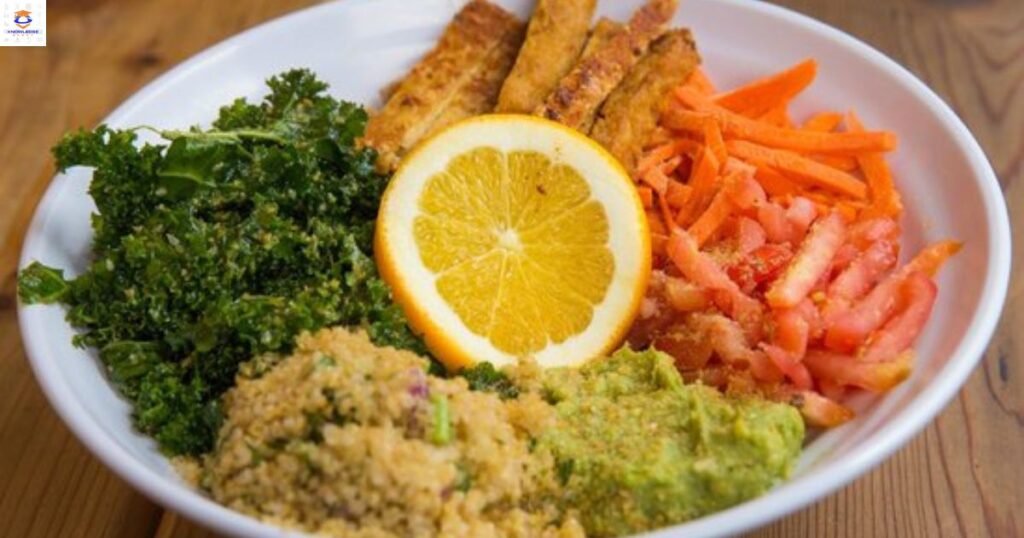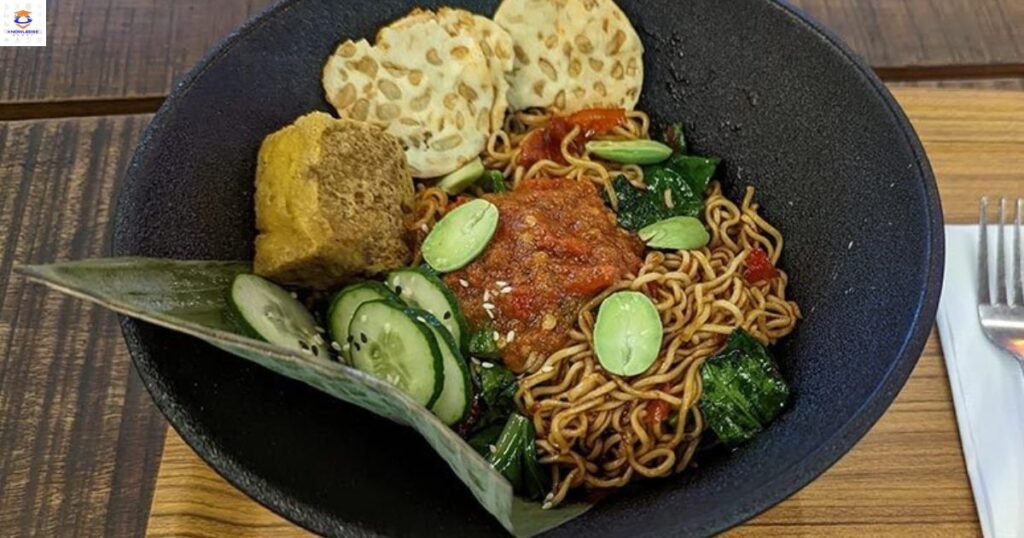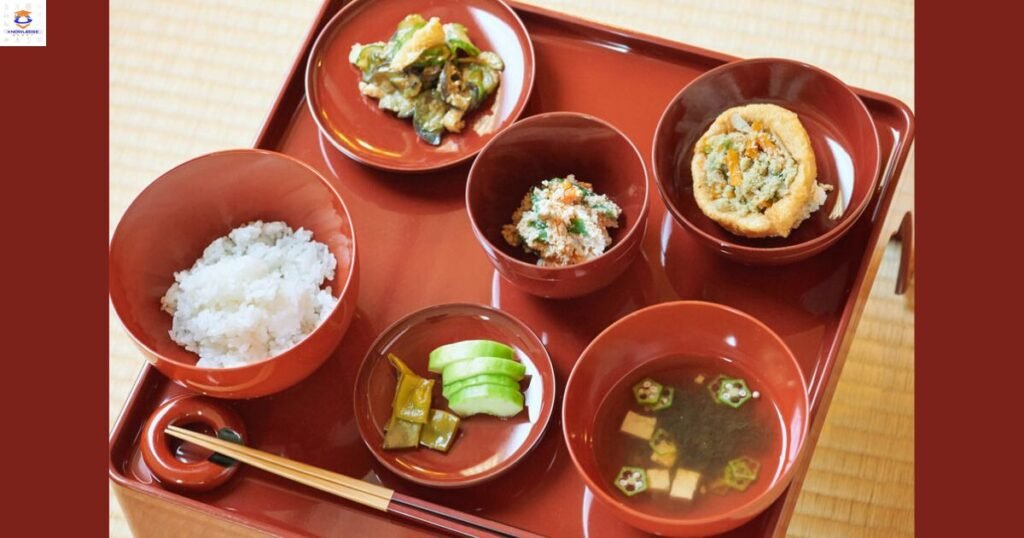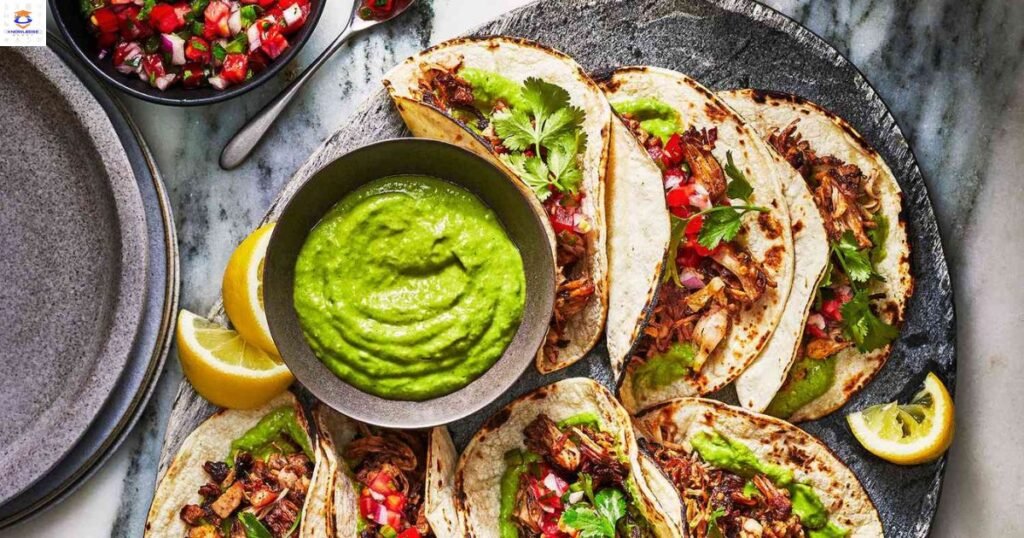Vegetarian cuisine focuses on nutritious and delicious plant-based dishes excluding meat, poultry, fish and sometimes other animal products like eggs or dairy.
A vegetarian diet offers health perks like lower heart disease, diabetes and cancer risks. Going meatless also promotes sustainable food systems. Vegetarian cuisine Getting adept at vegetarian cooking ensures access to manifold flavorful, satisfying meat-free meal options.
Read More: No Sugar No Flour Diet

What is Vegetarian Cuisine?
Vegetarian cuisine relies wholly on plant foods like vegetables, fruits, whole grains, nuts, seeds and beans while avoiding animal flesh from meat, poultry and fish. What defines vegetarian versus vegan cuisine comes down to use of other animal by-products:
- Lacto vegetarian diets exclude meat/seafood but allow dairy products
- Ovo vegetarian diets eliminate meat/seafood but permit eggs
- Lacto-ovo vegetarian diets exclude meat/seafood while allowing both dairy and eggs
Conversely, vegan cuisine eliminates all animal products including meat, dairy, eggs and honey. Compared with standard American diets, vegetarian and especially vegan patterns are naturally higher in beneficial antioxidants, fiber, unsaturated fats and other protective phytonutrients.
Benefits of Vegetarian Cuisine
Well-planned vegetarian and vegan diets offer health advantages like:
1. Lower Disease Risk
Studies consistently connect vegetarian eating with significantly reduced risks for obesity, heart disease, type 2 diabetes, certain cancers and other chronic illnesses.
2. Increased Longevity
Given the lower risks for life-shortening diseases, following vegetarian and vegan diets are associated with increased lifespan compared to meat-centric diets.
3. Weight Loss/Maintenance
The high fiber and water content of plant foods facilitates feeling full on fewer calories, benefiting weight control. Beans, legumes and meat alternatives also offer satiating plant protein.
4. Ethical Sustainability
Choosing vegetarian cuisine and reducing over-reliance on resource-intensive meat production supports more ethical, ecologically sustainable food systems.
Building Flavorful Vegetarian Meals
Creating satisfying vegetarian meals is all about using herbs, spices, produce, grains, sauces and cooking methods to build layers of texture and flavor. Vegetarian cuisine Follow these flavor-building tips:
1. Roasting vegetables like cauliflower, Brussels sprouts and carrots caramelizes natural sugars enhancing sweetness.
2. Sautéing aromatics like garlic, onion and ginger in oil extracts flavors to layer into stir fries, curries, stews and more.
3. Mixing textures by adding nuts, seeds, whole grains ensures meals have appealing crunch and visual appeal.
4. Playing with acids by incorporating citrus juice/zest, vinegars, wine builds brightness.
5. Blending heat elements like chili flakes or powders brings savory depth without relying on meat.
6. Incorporating umami-rich ingredients like tomatoes, mushrooms, nutritional yeast satisfies cravings for meaty richness.
Simple Swaps to Build Vegetarian Meals
Adapting favorite recipes to be meatless is simpler than it seems. Vegetarian cuisine Apply these substitution tricks:
Instead of: Ground beef, pork or turkey
Use: Lentils, chopped mushrooms, crumbled tempeh, textured vegetable protein
Instead of: Chicken pieces
Use: Marinated tofu, seitan or beans
Instead of: Beef stew meat
Use: Diced sweet or white potatoes plus beans or lentils
Instead of: Bacon
Use: Smoked paprika plus sautéed apples, onions or mushrooms
Instead of: Cheese toppings or mix-ins
Use: Avocado, pesto, sautéed greens or veggies, roasted red peppers

Vegetarian Cuisine: A Blossoming Symphony of Flavors and Vibrant Colors
Vegetarian cuisine, once relegated to a limited repertoire of salads and pasta dishes, has blossomed into a vibrant tapestry of flavors and textures, bursting with creativity and nutritional abundance. Gone are the days of bland bean burgers and sad salads; instead, a world of culinary delights awaits, tantalizing even the most dedicated carnivores. Vegetarian cuisine So, buckle up as we embark on a flavor-filled journey, exploring the diverse facets of vegetarian cuisine, from its ancient roots to its modern-day metamorphosis.
Ancient Origins: Seeds of a Plant-Based Tradition
Vegetarianism, the practice of abstaining from meat and often animal products, is not a novel concept. Its roots can be traced back to ancient civilizations, where lentils, beans, grains, and vegetables formed the bedrock of diets for religious, ethical, or practical reasons. In India, Hinduism’s reverence for all living beings spawned a rich vegetarian tradition, exemplified by dishes like dal makhani (creamy black lentil curry) and dosa (thin, fermented rice and lentil crepes).
Buddhist monks in China embraced plant-based meals, cultivating an intricate cuisine featuring stir-fries, tofu creations, and noodle dishes like kung pao tofu and dan dan noodles. Even Ancient Greece, known for its love of olives and legumes, boasted vegetarian philosophers like Pythagoras who advocated for a plant-based lifestyle.Kung pao tofu a spicy stirfry dish with tofu, peanuts, and vegetables
Modern Metamorphosis: A Flourishing Feast for the Senses
Today, vegetarian cuisine is no longer an afterthought but a culinary force to be reckoned with. Chefs around the world are reimagining classic dishes, crafting innovative flavor combinations, and pushing the boundaries of what plant-based food can be. From artisanal vegan cheeses that melt and stretch with uncanny accuracy to vegetable-based “meats” boasting convincing textures and smoky aromas, the possibilities seem endless. The rise of global cuisines has further enriched the vegetarian palate, introducing exciting new flavors and ingredients.
A Global Tapestry of Tantalizing Flavors
Each region brings its own unique flair to the vegetarian table:
- Mediterranean: Sun-drenched vegetables, creamy hummus, vibrant salads, and olive oil-infused dishes like falafel (deep-fried chickpea fritters) and moussaka (layered eggplant dish) offer a taste of the Greek isles. chevron_right Falafel deepfried chickpea fritters
- East Asia: Fragrant curries from Thailand, steaming noodle soups from Vietnam, and delicate stir-fries from China showcase the versatility of tofu, vegetables, and fresh herbs.
- Latin America: Spicy black bean burgers, creamy guacamole, and hearty enchiladas stuffed with roasted vegetables showcase the vibrant flavors of Mexico and beyond.
- Middle Eastern: Spiced lentil stews, roasted vegetables seasoned with za’atar, and fluffy flatbreads like pita bread offer a taste of the diverse culinary landscape of the Middle East.
A Symphony of Nutritional Abundance
Beyond the tastebuds, vegetarian cuisine offers a nutritional symphony for the body. Packed with fiber, vitamins, minerals, and antioxidants, plant-based diets have been linked to a multitude of health benefits, including reducing the risk of heart disease, type 2 diabetes, and certain cancers. Additionally, opting for locally-sourced, seasonal produce minimizes environmental impact and supports sustainable farming practices.
Building Your Vegetarian Symphony: A Composer’s Guide
Embracing a vegetarian lifestyle doesn’t require drastic overhaul. Here are some tips to compose your own harmonious melody of plant-based delights:
- Start small: Introduce more vegetables and whole grains into your current diet, gradually reducing your intake of meat.
- Explore the bounty: Experiment with different cuisines and recipes to discover new flavor combinations and textures.
- Listen to your body: Choose nutrient-dense foods that keep you feeling satisfied and energized.
- Embrace legumes: Lentils, beans, and chickpeas are protein powerhouses and versatile ingredients for soups, stews, and salads.
- Get creative: Don’t be afraid to experiment with spices, herbs, and cooking techniques to elevate your dishes.
- Seek inspiration: Cookbooks, online resources, and vegetarian restaurants offer a wealth of inspiration and guidance.
Conclusion
Committing to preparing more vegetarian cuisine offers meaningful benefits for personal and planetary health. Vegetarian cooking focused on vegetables, fruits, whole grains, beans/legumes, nuts/seeds, eggs and dairy serves up meals teeming with protective nutrients, fiber and plant compounds essential for fighting diseases, controlling weight and promoting longevity.
Embracing flavor-building cooking techniques makes vegetarian fare far from boring or restrictive. Simple ingredient swaps easily transform favorite recipes to be meatless without sacrificing enjoyment. Just as global culinary traditions offer endless carnivore-friendly options, the possibilities span even wider when tapping into satisfying vegetarian dishes eaten traditionally for generations among cultures worldwide.

Read More: Vegetarian Cuisine
FAQs
Is a vegetarian diet healthy long-term?
Yes, balanced vegetarian and vegan diets meeting needs for protein, iron, zinc and vitamin B12 offer health benefits across all life stages, including for pregnancy, infancy, childhood, adolescence and elderly.
Can you get enough protein from plant-based foods?
Combining complementary plant proteins like beans/rice, nuts/seeds, lentils/whole grains ensures adequate essential amino acids for meeting protein needs – even among athletes.
Is a vegetarian diet more expensive?
Meat analogs like veggie burgers can cost more than meat, but meals centered on plant staples like beans, lentils, eggs, whole grains and produce can cost less overall. Prioritizing affordable plant proteins helps minimize spending.
Don’t you need to take supplements on a vegetarian diet?
Vitamin B12 supplementation is recommended for vegans and some vegetarians, since natural food sources are mostly limited to animal products. Meeting other nutrient needs is achievable through proper meal planning.
Can you still eat out frequently?
It’s easier than ever to find appetizing plant-based options at restaurants ranging from fast casual to fine dining settings. Indian, Middle Eastern, Ethiopian, Asian and Mexican cuisines offer particularly abundant vegetarian choices.






